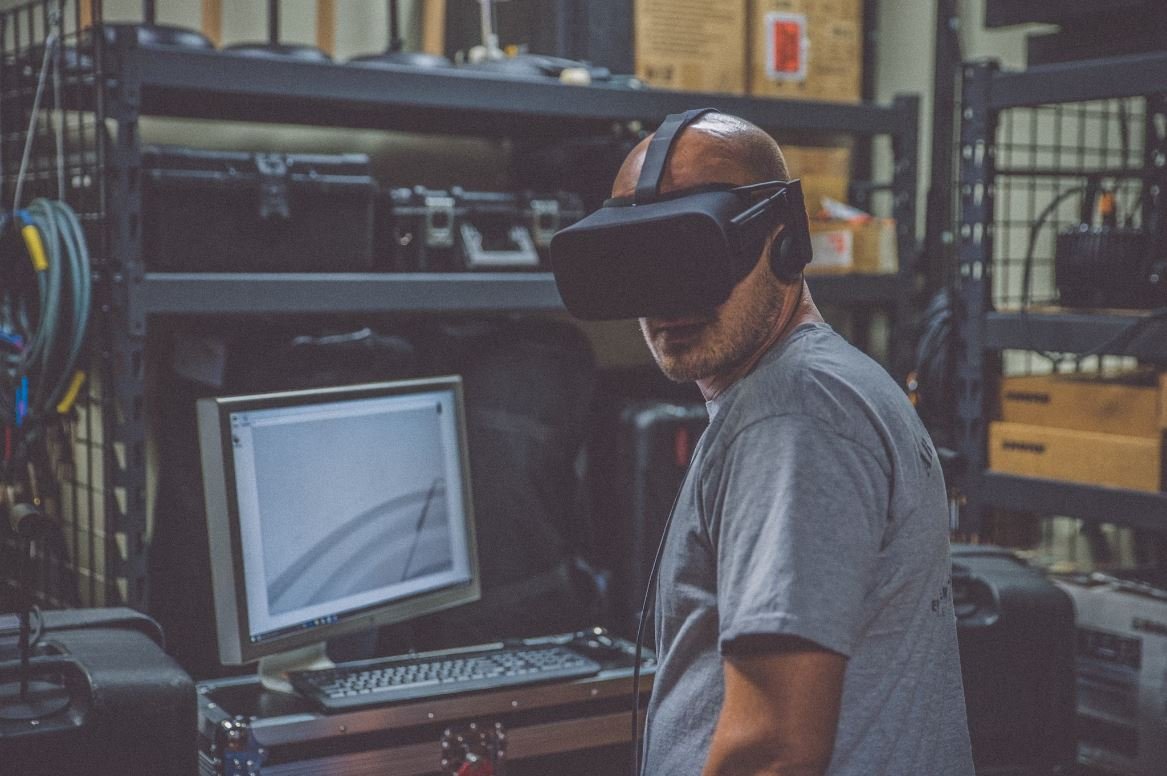AI for Images
The field of artificial intelligence (AI) has made significant advancements in recent years, particularly in the area of computer vision. AI algorithms can now analyze and interpret images with impressive accuracy, enabling a wide range of applications in industries such as healthcare, retail, and entertainment. From improving medical diagnostics to enhancing user experience, AI for images is revolutionizing the way we interact with visual data.
Key Takeaways:
- Artificial intelligence has greatly advanced in the field of computer vision.
- AI algorithms can analyze and interpret images with high accuracy.
- Applications of AI for images span across various industries.
**Computer vision** is the subfield of AI that focuses on developing algorithms and techniques to enable computers to understand and interpret visual data. Through the use of **deep learning**—the training of artificial neural networks with vast amounts of labeled data—AI models can be taught to recognize patterns and objects in images, classify images into categories, and even generate realistic images from scratch.
With the rapid growth of AI for images, industries are leveraging this technology to unlock new possibilities and drive innovation:
- Retailers are using **image recognition** to automatically tag products in images, enabling faster and more accurate product searches.
- **Medical imaging** is being transformed with AI algorithms that can quickly analyze X-rays, MRIs, and CT scans, aiding doctors in the detection and diagnosis of diseases.
- In **autonomous vehicles**, computer vision algorithms and AI models are essential for object detection, lane recognition, and decision-making.
AI for images is not just limited to practical applications; it also has a significant impact on the entertainment industry. Movie producers and game developers are utilizing AI to create hyper-realistic graphics and visual effects, enhancing the storytelling experience for audiences.
*One interesting concept in AI for images is **style transfer**, where an AI model can apply the artistic style of one image to another, creating unique and visually appealing artworks.*
Advancements in AI for Images
The advancements in AI for images have led to several breakthroughs and notable technologies:
- **Object detection** algorithms can precisely locate and classify multiple objects within an image, enabling various applications such as surveillance and image search.
- **Image segmentation** algorithms can partition an image into distinct regions, allowing for precise analysis of different components within the image.
| Industry | Application |
|---|---|
| Retail | Automatic product tagging in images |
| Healthcare | Medical image analysis for diagnosis |
| Autonomous Vehicles | Object detection and lane recognition |
*An intriguing aspect of AI for images is how it enables machines to understand the context and content of an image, which was previously a task reserved for humans.*
Challenges and Future Directions
While AI for images has come a long way, there are still challenges to overcome in order to achieve even higher levels of accuracy and reliability:
- **Data bias** in training datasets can lead to biased model outputs, reinforcing human biases and potentially resulting in unfair or discriminatory decisions.
- **Interpretability** of AI models is a critical aspect, as understanding the rationale behind their decisions helps build trust and ensures accountability.
- **Ethical considerations** arise when it comes to the creation of deepfakes and the potential misuse of image manipulation technologies.
| Technology | Description |
|---|---|
| Object Detection | Precisely locating and classifying objects in images |
| Image Segmentation | Partitioning images into distinct regions |
| Style Transfer | Applying artistic style of one image to another |
With continued research and development, AI for images holds great promise for shaping the future of various industries. As the accuracy and capabilities of AI algorithms continue to improve, the potential for innovation and advancement becomes boundless.

Common Misconceptions
Misconception #1: AI can perfectly understand and interpret images
One common misconception about AI for images is that it can flawlessly understand and interpret any given image. While AI has made impressive advancements in image recognition and analysis, it is not perfect and still struggles with some challenges.
- AI algorithms can misinterpret complex images with multiple objects or intricate backgrounds.
- AI may produce inaccurate results when faced with ambiguous or subtle visual cues.
- AI’s understanding of images can be limited by the quality and diversity of training data.
Misconception #2: AI can replace human creativity in image-related tasks
Another misconception is that AI will entirely replace human creativity in image-related tasks. While AI has the potential to aid and enhance creative efforts, it cannot substitute the nuanced and imaginative capabilities of human artists or designers.
- AI lacks the ability to generate truly original and innovative concepts or ideas.
- AI-generated images often lack the emotional depth and subtlety present in human creations.
- AI may generate images based solely on existing patterns in the training data, leading to a lack of novelty.
Misconception #3: AI can accurately predict human emotions from facial expressions
Many people assume that AI can flawlessly predict human emotions from facial expressions in images. While AI has made progress in emotion recognition, it is not yet capable of accurately capturing the full range and complexity of human emotions.
- AI may misinterpret facial expressions due to cultural or individual differences in emotive expressions.
- AI may struggle to recognize and interpret subtle or mixed emotions in facial expressions.
- AI models are limited by the quality and diversity of the labeled emotional data used in training.
Misconception #4: AI can’t be biased when analyzing or generating images
Another misconception is that AI is entirely unbiased when analyzing or generating images. However, AI systems are prone to biases due to the data they are trained on and the underlying algorithms.
- AI can perpetuate societal or cultural biases present in the training data, leading to biased judgments or generated images.
- AI can be influenced by human biases and prejudices present in the labels or annotations provided during training.
- Bias in AI can have significant ethical implications, particularly when used in areas such as criminal justice or recruitment.
Misconception #5: AI can autonomously understand the context and meaning of images
Finally, some may wrongly believe that AI can autonomously understand the context and meaning behind images. While AI algorithms can analyze visual patterns and features, they lack true contextual understanding.
- AI may struggle to grasp the nuanced meaning or symbolic significance behind certain images.
- AI may misinterpret images when they are unfamiliar with the cultural or contextual references involved.
- AI’s understanding of images is limited to the patterns and associations it learned during training.

AI for Images: The Impact on Artistic Expression
The use of artificial intelligence (AI) in image processing has revolutionized the field of artistic expression. This article explores ten fascinating aspects of how AI has transformed images, from enhancing traditional techniques to creating entirely new art forms.
Rediscovering Classic Masterpieces
AI algorithms have been employed to restore and uncover hidden details in classic masterpieces. By analyzing high-resolution scans, AI can reveal the original colors, textures, and finer elements of renowned paintings, offering art enthusiasts an enriched appreciation of these timeless works.
Creating Hyper-Realistic Portraits
AI algorithms have the capability to generate hyper-realistic portraits that closely resemble human faces. By analyzing countless facial features and expressions, the technology can create portraits that blur the boundaries between real and virtual, challenging our perception of reality.
Generating Surreal Landscapes
AI algorithms can generate surreal landscapes by merging fragments from various images. Through the use of generative adversarial networks (GANs), these algorithms can combine elements in unexpected ways, leading to the creation of dreamlike natural environments that stimulate the imagination.
Revolutionizing Digital Animation
AI has revolutionized digital animation by automating several labor-intensive tasks. From motion capture to facial recognition, these technologies enable animators to streamline the animation process, resulting in smoother and more realistic movement in characters and objects.
Transforming Photography with Style Transfer
Style transfer algorithms use AI to change the artistic style of an image while preserving its content. By infusing the characteristics of renowned artists or artistic movements into regular photographs, AI allows photographers to create unique and visually stunning images that challenge traditional aesthetic norms.
Automating Image Editing
AI-powered tools automate image editing tasks, such as background removal, object recognition, and color correction. These technologies free up valuable time for professional photographers and graphic designers, allowing them to focus on creative decision-making and experimentation.
Supporting Accessibility for Visually Impaired
AI algorithms have played a crucial role in improving accessibility for visually impaired individuals. By utilizing image recognition and descriptive metadata, AI can provide detailed audio descriptions of photographs and artworks, enabling people with visual impairments to experience and appreciate visual content more fully.
Predicting Image Popularity
AI algorithms can predict the popularity of an image on social media platforms by analyzing various visual and contextual factors. By detecting elements such as colors, composition, and subject matter, AI can assist photographers and marketers in curating and sharing images that resonate with their target audience.
Cultivating Cross-Cultural Artistic Influences
AI algorithms excel at identifying patterns and themes in vast collections of artwork from diverse cultural backgrounds. By analyzing and comparing various artistic traditions, AI can facilitate cross-cultural artistic influences, fostering collaborative and innovative approaches to art creation.
Conclusion
The emergence of AI in image processing has revolutionized artistic expression in unparalleled ways. From restoring classic masterpieces to automating image editing tasks, AI has pushed the boundaries of creativity and challenged conventional artistic norms. As this technology continues to evolve, we can anticipate even more remarkable transformations in the world of images, inviting us to question our understanding of beauty and human creativity.
AI for Images – Frequently Asked Questions
General Questions
What is AI for Images?
AI for Images refers to the use of artificial intelligence techniques and algorithms to analyze and process images automatically. It involves training machine learning models to understand and interpret visual data to perform various tasks, such as object recognition, image classification, and image segmentation.
How does AI for Images work?
AI for Images works by training machine learning models on large datasets of labeled images. These models learn to recognize patterns, features, and characteristics of different objects and scenes within an image. By analyzing pixel data and applying sophisticated algorithms, AI systems can identify, label, and understand images accurately.
Applications of AI for Images
What are some real-world applications of AI for Images?
AI for Images has various practical applications, including but not limited to:
- Facial recognition for identification and security systems
- Object detection for autonomous vehicles and surveillance systems
- Medical imaging analysis for disease detection and diagnosis
- Image-based search engines for visual content retrieval
- Quality control in manufacturing industries
Can AI for Images be used for artistic purposes?
Yes, AI for Images can be used for artistic purposes. By training models on a large dataset of artistic images, AI systems can generate new artworks, apply artistic filters, and even recreate famous paintings in a similar style. This has opened up new possibilities for creative expression and exploration in the art world.
Limits and Ethical Considerations
Are there any limitations to AI for Images?
Yes, AI for Images has certain limitations. It may struggle with images that contain ambiguous or rare objects, as the models might not have encountered such examples during training. Additionally, AI systems can sometimes produce biased or incorrect results, especially if the training data is biased or incomplete. Regular updates and monitoring are necessary to ensure optimal performance.
What are the ethical considerations of AI for Images?
Ethical considerations of AI for Images include privacy concerns in facial recognition technologies, potential misuse of surveillance systems, and the responsible handling of sensitive visual data. There is a need to establish regulations and guidelines to ensure fair and ethical use of AI for Images, protecting individuals’ privacy rights and preventing discriminatory practices.
Integration and Adoption
How can businesses integrate AI for Images into their operations?
Businesses can integrate AI for Images by either developing their own in-house AI systems or leveraging existing AI platforms and APIs. They can use these technologies to automate image analysis tasks, improve decision-making processes, enhance customer experiences, and streamline various operations that involve visual data.
Is AI for Images accessible to individuals with limited technical knowledge?
While AI for Images involves complex algorithms and technologies, there are user-friendly platforms and tools available that allow individuals with limited technical knowledge to utilize AI for image-related tasks. These platforms often provide intuitive interfaces and pre-trained models, simplifying the process of integrating AI for Images into one’s workflow.
Accuracy and Improvement
How accurate are AI systems for image analysis?
The accuracy of AI systems for image analysis can vary depending on the complexity of the task and the quality of the training data. State-of-the-art models can achieve impressive results, but it’s crucial to regularly evaluate and update the models to maintain high accuracy levels. Continuous improvement and adaptation are essential for enhancing the performance of AI systems.
How can the accuracy of AI for Images be improved?
To improve the accuracy of AI for Images, training datasets should be diverse, inclusive, and representative of the real-world scenarios the system will encounter. Increasing the size of the dataset and incorporating domain-specific knowledge can also enhance accuracy. Fine-tuning models, monitoring performance, and incorporating user feedback are other approaches to ensure continuous improvement.




